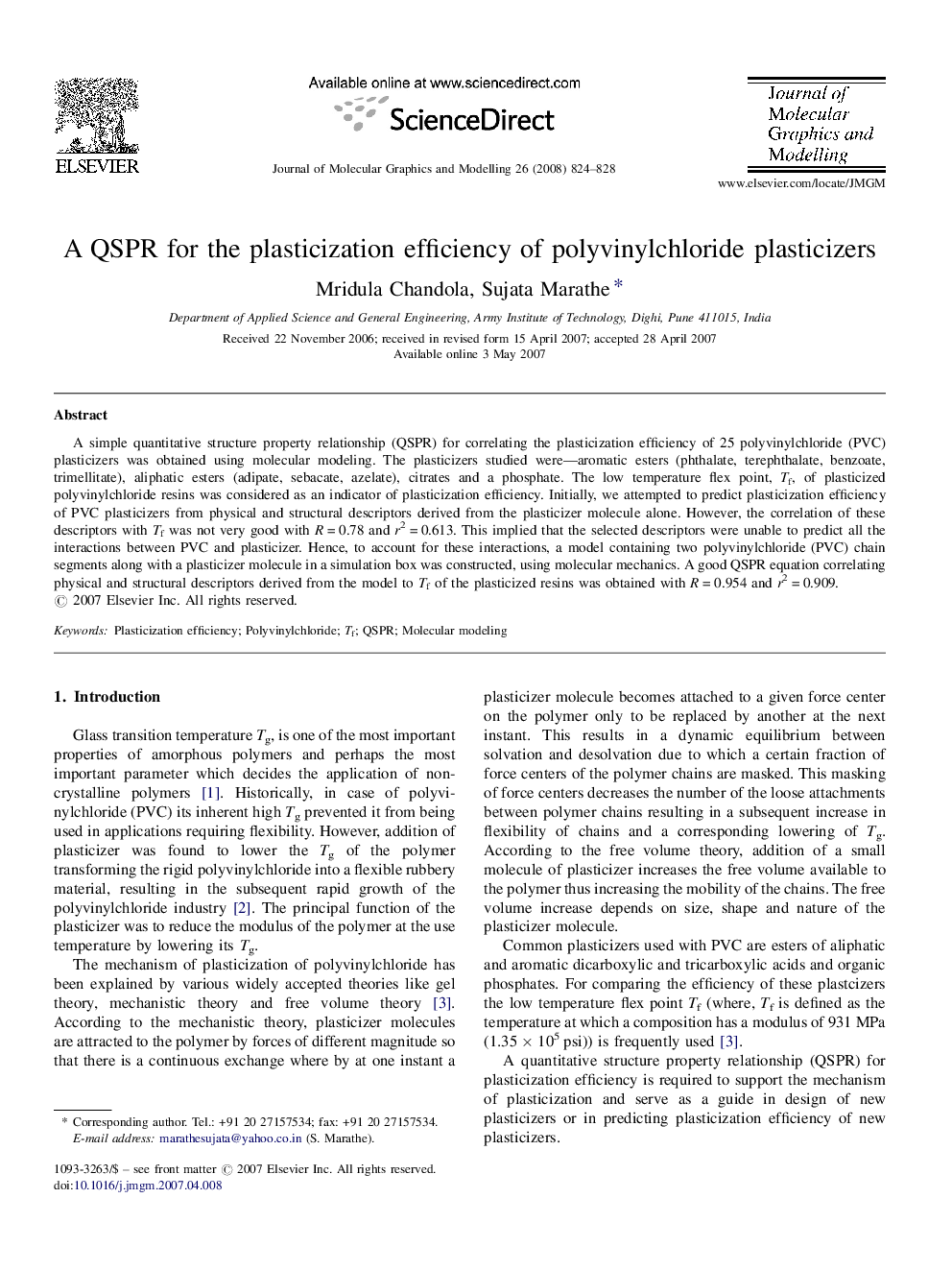| Article ID | Journal | Published Year | Pages | File Type |
|---|---|---|---|---|
| 444731 | Journal of Molecular Graphics and Modelling | 2008 | 5 Pages |
A simple quantitative structure property relationship (QSPR) for correlating the plasticization efficiency of 25 polyvinylchloride (PVC) plasticizers was obtained using molecular modeling. The plasticizers studied were—aromatic esters (phthalate, terephthalate, benzoate, trimellitate), aliphatic esters (adipate, sebacate, azelate), citrates and a phosphate. The low temperature flex point, Tf, of plasticized polyvinylchloride resins was considered as an indicator of plasticization efficiency. Initially, we attempted to predict plasticization efficiency of PVC plasticizers from physical and structural descriptors derived from the plasticizer molecule alone. However, the correlation of these descriptors with Tf was not very good with R = 0.78 and r2 = 0.613. This implied that the selected descriptors were unable to predict all the interactions between PVC and plasticizer. Hence, to account for these interactions, a model containing two polyvinylchloride (PVC) chain segments along with a plasticizer molecule in a simulation box was constructed, using molecular mechanics. A good QSPR equation correlating physical and structural descriptors derived from the model to Tf of the plasticized resins was obtained with R = 0.954 and r2 = 0.909.
